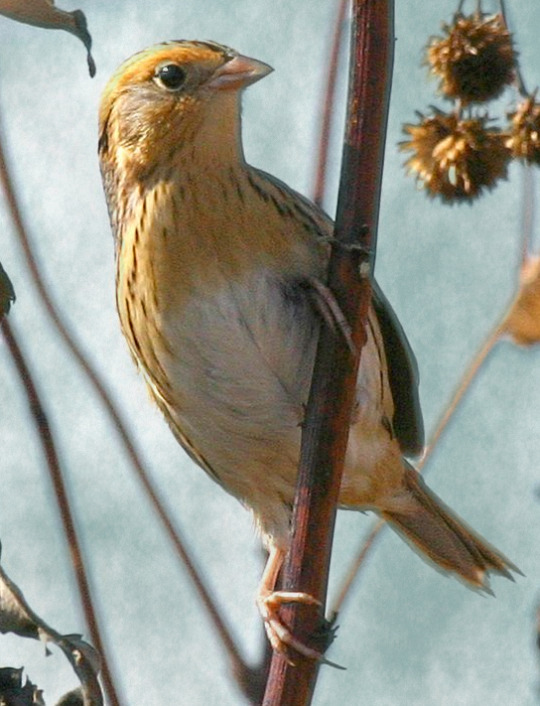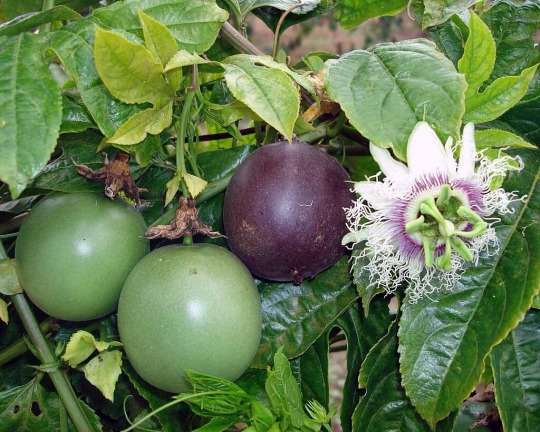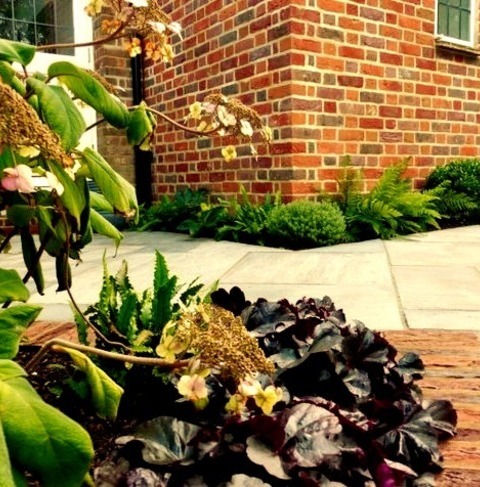#backyard conservation
Text

#pools#urban wildlife#backyard nature#yards#home and garden#homes#animals#nature#conservation#environment
86 notes
·
View notes
Text
God, I had one (1) candid conversation with my mother and now she keeps telling everyone that I have no filter. Not my brother, who never watches his language and talks about going off on park rangers and road raging and how he was gonna punch the guy dropping a package off at our house for almost running into him. Not my brother who mutters shit under his breath in front of my parents, who throws fits when he gets scolded even though he's 31. Not my brother who barely has a filter at work by his own admission.
Me. Who doesn't curse in front of my parents. Who always watches what I say so I don't start a fight. Who admitted to my parents there are things I'd like to tell my brother but don't so I don't come off sounding like another parent to him.
I am the one who doesn't have a filter.
#My parents: we're not conservatives#Also my parents: watch Fox news. Believe the law was out to get trump. Who once told me if I was#Trans or enby they'd deadname me because they 'know me better'.#My mom actually said to me during our Candid Conversation that she'd hope I'd pay more attention to her#'words and actions' and not what media she consumed#But this is coming from the lady who got upset there was a black trans man working with a gay Mexican and white guy on TV#Alongside my dad who has said he doesn't mind lesbian relationships on tv when they're 'not shoved in his face'#I'm just. I don't WANT to have a filter but I'm genuinely afraid of what would happen if I didn't.#I live with them. My horses are kept in the backyard.#If I could afford to keep my horses elsewhere & move out I would absolutely have less of a filter#Ugh. I'm tired.#Delete later
9 notes
·
View notes
Text


Get to know your bird organizations:
Audubon Society
The Audubon Society is known as the most important conservation policy and advocacy group in North America, organizing research and helping to pass laws (including the Migratory Bird Act) protecting vulnerable species and vital areas.
The society has local chapters, its own wildlife refuges, and nature centers that provide school and summer camps.
Audubon is also known for community-driven research such as the annual Christmas Bird Count (the "CBC")—see data visualization here, and the Great Backyard Bird Count.
The Audubon Photography Awards are something to look forward to each year, with incredible work from around the world being celebrated for sheer beauty, humor, and bird behaviors. The photos are published in the Summer issue of the society's magazine (the submission period is January through February).
Two of the highlights of Audubon's research and information are:
Guide to North American Birds (website and app for iPhone and Android); This is my preferred field guide for birds, and I especially appreciate the easy navigation of the app. It has a Bird ID function, provides 3-5 photos of each species, range maps, information on habitat and nesting, examples of bird calls, and tabs for sightings (using eBird data), photos of similar birds.
One thing that stands out is that the Audubon app downloads the bird information to your phone (the regional pack file sizes can be pretty big), so you don't need an active cellphone signal (helpful in remote areas).
Bird Migration Explorer (visualizer showing the movement of birds at any point in the year, including individually tagged birds).
(Eastern Phoebe photo by @everydayesterday)
#north american birder#audubon#national audubon society#birding#birdwatching#nature conservation#birds#bird migration explorer#christmas bird count#great backyard bird count#audubon photography awards
2 notes
·
View notes
Text
Thought experiment regarding non-linear causal nets using an analogy of "dynamical chess"
Imagine a flexible chess board where each move of the chess figures alters the board. And each alteration of the board has effects on the figures as well, causing alteration in the behavior of the figures [a.k.a. the rules each figure has as a pre-defined rule]. | (That's entanglement of feedback-loops.) - This leads to chaotic behavior, making predictions even more difficult and "turbulent".
[This sort of chess is like the interaction between spacetime and matter.]
Following a helpful quote by John Wheeler:
"Spacetime tells matter how to move; matter tells spacetime how to curve."
- John Archibald Wheeler, Geons, Black Holes and Quantum Foam: A Life in Physics
---
Why do I use the neologism "non-linear causal nets"?
There is a kind of idiom-like brabble, called "causal chains". It states a linear string of cause-and-effect. This is often far too simplified for explaining real-life phenomena, because often there are far more causes to an effect than just one. There happen many "causal chains" simultaneously, so to speak. These causal chains are entangled. Multiple of such linear cause-and-effects are entangled, until they are no longer a linear-string or multiple linear strings, but a complex web. Each causal chain alters each other. That is basically a fundamental principle often recognized in quantum mechanics - interference.
It describes conservation of momentum in an analogy-based and merely imagination-based language of knots and loops, similar to some approaches of string theory and (loop) quantum gravity.
Information weaving
"Information weaving" might be the silly name I would use for that collection of conceptions and re-interpretations.
"Information transforms" in this conception are weaving patterns. In concrete, these are interaction patterns like
- replication of interaction pattern (like law of inertia)
- and interference/alteration of interaction pattern (momentum).
These two transforms are the two primary transforms. You can combine them and create all possible sorts of patterns.
Furthermore,... these relate to addition and multiplication of imaginary numbers, resulting in either a translation or a rotation in the complex plane... These might relate to the information transforms stated above.
But the research regarding this is really difficult and curently my mind is too sluggish and too over-crowded to compute it well enough.
It might take some years until it's less mad nonsense.
...
Spacetime as emergent property of entanglement
I enjoy the project It from Qubit and Polymath Vijay's interpretation that spacetime is emergent due to entanglement.
In my interpretation/analogy of "information weaving" time is a string, and space is the web consisting of that string. Space and time are hence "two aspects of one and the same thing".
This is especially interesting if you consider the difference between a time and a space dimension.
A space dimension has two ways of propagation, so to speak: left-right, top-down, before-behind... (to put it in plain words)
When it comes to the time dimension, I consider it to have only one propagation direction: The future, like in the conception of the arrow of time.
But here it becomes complex. Since time is "mono-directional", say, it has only one direction to propagate towards, it might interact with itself - via feedback-loops. This results in literal entanglement if you consider the arrow of time to be a simple string. Loop, knot and weave that string/arrow with itself and you might have spacetime as a complex result, so to speak.
In regards to quantum entanglement and superposition this interpretation might make sense as well, but I am not far enough with my research about that topic to summarize it coherently.
Furthermore, you can also define quantum gravity as the "degree of clotting": or, say: Let's interpret gravity as a principle of clustering: Areas with more density gain density, and areas with less density lose even more density, to reduce gravity to its primary principle.
Gravity is hence a re-distribution, a re-ordering of matter, or information, so to speak...
In regards to my information weaving conception, quantum gravity defines the density of information. It also defines how information re-distributes itself over time.
How the clustering happens depends on the patterns of interaction. And the patterns of interaction are affected by clustering as well. (Leading us back to Wheeler's quote above... )
What is "information"?
I regard information as an interaction pattern, a pattern in the web of causal nets, so to speak.
...
This is all a bit difficult to summarize. I will visualize it once I have summarized the parts of it well enough.
---
That was my literally chaotic thoughts as of today. It's a bit (/very much) incoherent.
#from the backyard of my theoretical bullshittery factory#information weaving#it from qubit#quantum gravity#analogy#analogies#chess#dynamical systems#non linear causal nets#entangled#entanglement#causality#cause and effect#conservation of momentum#quantum mechanics#information#quantum information theory#quantum information#quote#wheeler#spacetime#space#time#relativity#chaos theory#chaos#interaction patterns#math#mathematics#thought experiment
44 notes
·
View notes
Text
Oriental Magpie Robin from my balcony
Also in the blog now:
Small Batch BrowniesBlack and White birds from my balconyRose Ringed Parakeets from my balconyBreakfast plate dosai waffles sundal
Check out my Instagram profile and highlights for more pics and recipes – @Fhareena #parveenskitchen #foodblogger

View On WordPress
#Asian birds#avian#backyard biodiversity#Backyard Birding#balcony#beautiful birds#bird#Bird Behavior#bird conservation#bird diversity#bird enthusiasts#Bird Identification#bird lovers#bird photography#Bird Species#bird watching from home#birding hobby#birds#Birdwatching#capturing wildlife#city birds#city dwellers#colorful birds#feathered friends#garden visitors#magpie robin#nature#nature in the city#observing nature#oriental magpie Robin
3 notes
·
View notes
Photo

BobCat wants to get into the shed . . . . . #bobcat #feline #nanpapix #backyard #sonyalpha #wildlifephotography #wildlife #nature #animal #outdoorphotography #conservation #naturephotography #outside #outdoors #naturelover #bigcat #predator #newengland #naturepic #ourplanet #wildlife_seekers #Wildlifephotos #lynx #cat #cats #lynxcat #animals #catsofinstagram #animal #wildcat #animallovers https://www.instagram.com/p/CqLfpL5uW9B/?igshid=NGJjMDIxMWI=
#bobcat#feline#nanpapix#backyard#sonyalpha#wildlifephotography#wildlife#nature#animal#outdoorphotography#conservation#naturephotography#outside#outdoors#naturelover#bigcat#predator#newengland#naturepic#ourplanet#wildlife_seekers#wildlifephotos#lynx#cat#cats#lynxcat#animals#catsofinstagram#wildcat#animallovers
3 notes
·
View notes
Text
Most Alberta political histories I’d read in the past will only go so far as 1990 at the absolute latest so it’s odd to read “history” during bits i was alive and it makes me think about how my parents understand the histories of their lifetimes etc.
I’ll ignore the obvious parallels of contemporary politics and the dated nature of some quotes about Alberta never having a proper opposition party (lol) just to note that the chapter ends by saying that perhaps Lois Hole is the only decent Alberta politician and I can say from experience that she gave great hugs hahahaha
#do i have any idea why lois hole visited my elementary school? nope#did my dad laugh and laugh when i told him i shook REDACTED conservative MPs hand at school#and later proceeded to find pictures of him in the newspaper and toss them into our backyard fires? well#sorry i said MP i meant mla you knowwww#hapo rambles#hapo reads canadian history#grandma also still has a huge stack of lois hole's books
6 notes
·
View notes
Text
Project FeederWatch: Bridging Citizen Science with Birdwatching

View On WordPress
#avian world#backyard biodiversity#backyard birding#backyard birds#backyard birdwatching#backyard nature#backyard wildlife#bird behavior#bird conservation#bird conservation efforts#bird counts#bird diversity#bird ecology#bird enthusiasts#bird feeder#bird feeder behavior#bird feeder care#bird feeder cleaning#bird feeder data#bird feeder designs#bird feeder hygiene#bird feeder maintenance#bird feeder monitoring#bird feeder networks#bird feeder observations#bird feeder participation#bird feeder patterns#bird feeder placement#bird feeder reports#bird feeder selection
0 notes
Text
Growing Passion Fruit in the Arizona Low Desert
Growing tropical passion fruit in Queen Creek, Arizona or other pars of Arizona’s Low Desert, can be a bit of a challenge but not impossible! The hot summers and mild winters can work in your favor, but you’ll need to provide extra care and attention, especially during the extreme heat.
Best Varieties for Arizona: The “Frederick” variety is known for its heat tolerance and could be a good…

View On WordPress
#Arizona gardening#Backyard Orchard#desert gardening#DIY Gardening#Edible Gardening#fruit harvesting#Fruit Vines#Garden Care#garden planning#Garden Tips#Gardening in Dry Climates#Heat Tolerant Plants#Home Gardening#organic gardening#Passion Fruit#Plant Varieties#Sustainable Gardening#Tropical Fruit#Urban Gardening#water conservation
0 notes
Text
#Bird Migration Routes#Avian Journeys#Birdwatching Adventures#Discover USA Birds#Ornithology Exploration#Bird Species Migration#Nature Travel#Birding Hotspots#Wildlife Migration#Bird Conservation#backyard birds#birdwatching#birdphotography#birds#birding#ornithology#birdlovers#bird
0 notes
Photo

Los Angeles Natural
Large island style backyard stone and custom-shaped natural hot tub photo
#natural stone bordered pool#solid stone wall#palm trees in backyard#drought tolerant#water conservation#environmentally friendly landscape#pool
0 notes
Text
Mxtx love interests and their relationships with captivity are fascinating and all, but I’d rather just focus on how funny Hua Cheng’s is in particular.
We have Luo Binghe‘s creepy replica bamboo hut and the tragic horror of watching him succumb to his worst impulses and try destroying the world to trap Shen Qingqiu by his side.
We have Lan Wangji warring internally with himself for years over his smothering need to hide Wei Wuxian from the world and save him from himself.
And then there’s Hua Cheng
Professional Gege Catch and Release Wildlife Expert Hua Cheng.
This man is a gege rehabilitation facilitator who does what he loves and loves what he does.
He tags his gege with a gps tracker so he can study his migration patterns. He humanely traps and relocates his gege whenever he’s strayed into danger.
If you hit a gege with your car, all you need to do is call Hua Cheng and he’ll be there with an animal control slip leash, a GoPro to promote his TikTok campaign promoting awareness of gege welfare and conservation to the masses, and Yin Yu is on the phone preparing the treatment center for a new arrival.
He’s one of those guys who lovingly cares for a feral cat colony in his backyard, providing handmade housing with heating and regular check ups.
He’s insane don’t get me wrong. But his crippling self doubt and unbreakable compulsion to provide merged in such a weird way, it comes off a little more wildlife rescue than I think is intended.
#tgcf#mxtx#anime#xie lian#hualian#heaven official's blessing#hua cheng#mdzs#wei wuxian#lan wangji#grandmaster of demonic cultivation#scumbag#scum villain#svsss#luo binghe#shen qingqiu#tgcf meme#wangxian
2K notes
·
View notes
Photo

Bobcat posing for the trail cam. . . . . #wildlife #wildlifephotography #animal #nature #garden #backyard #nanpapix #sonyalpha #bobcat #Wildcat #conservation https://www.instagram.com/p/CqG3qSSPo1f/?igshid=NGJjMDIxMWI=
#wildlife#wildlifephotography#animal#nature#garden#backyard#nanpapix#sonyalpha#bobcat#wildcat#conservation
2 notes
·
View notes
Text
How people in the USA loved nature and knew the ways of the plants in the past vs. nowadays
I have been in the stacks at the library, reading a lot of magazine and journal articles, selecting those that are from over fifty years ago.
I do this because I want to see how people thought and the tools they had to come up with their ideas, and see if I can get perspective on the thoughts and ideas of nowadays
I've been looking at the journals and magazines about nature, gardening, plants, and wildlife, focusing on those from 1950-1970 or thereabouts. These are some unstructured observations.
The discourse about spraying poisons on everything in your garden/lawn has been virtually unchanged for the past 70 years; the main thing that's changed is the specific chemicals used, which in the past were chemicals now known to be horribly dangerous and toxic. In many cases, just as today, the people who opposed the poisons were considered as whackos overreacting to something mostly safe with a few risks that could be easily minimized. In short, history is not on the pesticides' side.
Compared with 50-70 years ago, today the "wilderness" areas of the USA are doing much better nowadays, but it actually appears that the areas with lots of human habitation are doing much worse nowadays.
I am especially stricken by references to wildflowers. There has definitely been a MASSIVE disappearance of flowers in the Eastern United States. I can tell this because of what flowers the old magazines reference as common or familiar wildflowers. Many of them are flowers that seem rare to me, which I have only seen in designated preserves.
There are a lot more lepidopterans (butterflies and moths) presumed to be familiar to the reader. And birds.
Yes, land ownership in the USA originated with colonization, but it appears that the preoccupation with who owns every little piece of land on a very nitpicking level has emerged more recently? In the magazines there is a sense of natural places as an unacknowledged commons. It is assumed that a person has access to "The creek," "The woods," "The field," "The pond" for simple rambling or enjoyment without personally owning property or directly asking permission to go onto another person's property.
There is very little talk of hiking and backpacking. I don't think I saw anything in the magazines about hiking or going on hikes, which is strange because nowadays hiking is the main outdoor activity people think of. Nature lovers 50-70 years ago described many more activities that were not very physically active, simply watching the birds or tending to one's garden or going on a nice walk. I feel this HAS to do with the immediately above point.
Gardening seems like it was more common, like in general. The discussion is about gardening without poisons or unsustainable practices, instead of trying to convince people to garden at all.
Overall, the range of animals and plants culturally considered to be common or familiar "backyard" creatures has narrowed significantly, even as the overall conservation status of animals and plants has improved.
This, to me, suggests two things that each may be possible: first, that the soils and environments of our suburbs and houses have sustained such a high level of cumulative damage that the life forms they once supported are no longer able to live, or second, that our way of managing our yards and inhabited areas has become steadily more destructive. Perhaps it may be the case that the minimum "acceptable" standard of lawn management has become more fastidious.
In conclusion, I feel that our relationship with nature has become more distant, even as the number of people who abstractly support the preservation of "wilderness" has increased. In the past, these wilderness preservation initiatives were a harder sell, but somehow, more people were in more direct contact with the more mundane parts of nature like flowers and birds, and had a personal relationship with those things.
And somehow, even with all the DDT and arsenic, the everyday outdoor spaces surrounding people's homes were not as broadly hostile to life even though the people might have FELT more hostile towards life. In 1960, a person hates woodpeckers, snakes and moths and his yard is constantly plagued by them: in 2024, a person enjoys the concept of woodpeckers, snakes and moths but rarely sees them, and is more likely to think of parks and preserves as the place they live and need to be protected. Large animals are mostly doing better in 2024, but the littlest ones, the wildflowers and bugs and birds, have declined steeply. It's not because "wilderness" is less; it seems more because non-wilderness has declined in quality.
2K notes
·
View notes
Text
Thank you for sharing this! This is another one of those situations where we are just now seeing the noticeable, dramatic payoff of years and years of quiet, unnoticed environmental work.
"Experts say years of conservation efforts have resulted in some of the healthiest waters in generations, with booming fish populations, clearer ocean waves and more chances to interact with our urban aquarium."
This quote also really got me:
"'It never gets old, it’s always thrilling,' said Celia Ackerman, a naturalist with American Princess Cruises who captured the images. As a child growing up in Brooklyn, Ackerman couldn’t wait to move out of the city so she could study marine animals. 'I would have never imagined I could enjoy them here right in my backyard.'"
#submission#ocean conservation#ocean wildlife#marine wildlife#cetacean#whales#whale conservation#wildlife#biodiversity#good news#hope#slow hope
35K notes
·
View notes
